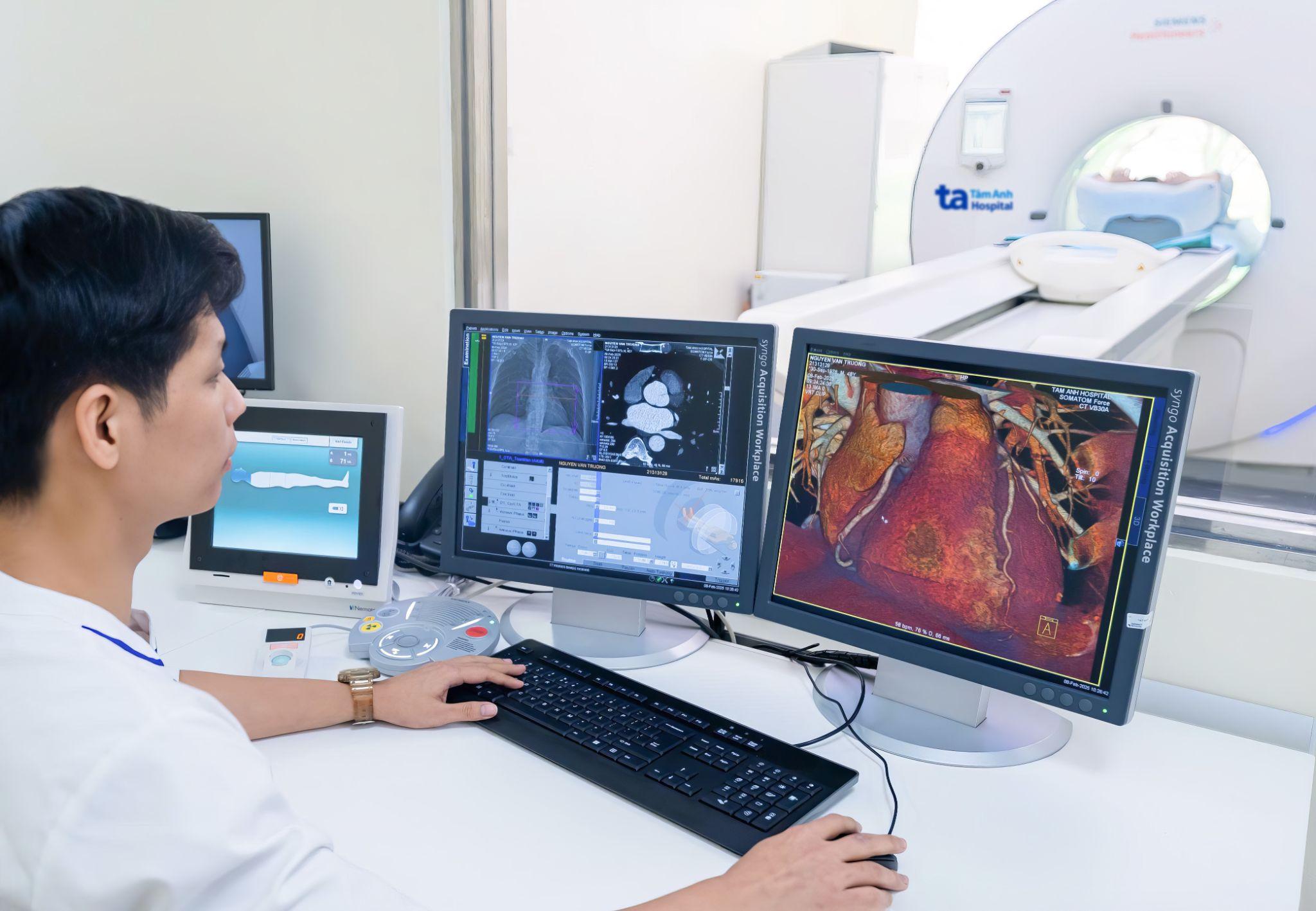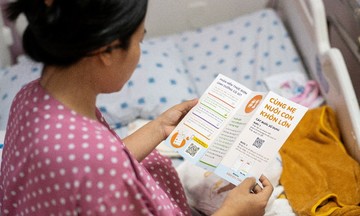"It's rare for a young patient to have two heart attacks in such a short time," said Professor Vo Thanh Nhan, director of the interventional cardiology center at Tam Anh General Hospital in Ho Chi Minh City.
In March, Tinh experienced pain above his navel that spread to his chest, left arm, and back. Doctors diagnosed a 95% blockage in his left main coronary artery, a type of non-ST-elevation myocardial infarction (NSTEMI) heart attack. He received a stent in this artery. His right coronary artery also had a 50% blockage, but it didn't require immediate intervention. He was prescribed medication and advised to have regular check-ups.
Five months later, Tinh experienced persistent chest pain and was rushed to Tam Anh General Hospital. Doctors found a complete blockage in his right coronary artery, cutting off blood flow to a section of his heart. He was diagnosed with a second heart attack.
Tinh had a history of poorly managed dyslipidemia (high cholesterol). During his first heart attack, his LDL cholesterol (bad cholesterol) level was 9.4 mmol/L, significantly higher than the normal level of below 2.6 mmol/L. Professor Nhan noted this was an abnormally high LDL level for someone his age. The cause may be familial hypercholesterolemia, a genetic condition that accelerates atherosclerosis (plaque buildup in arteries).
Medication brought Tinh's LDL down to 3 mmol/L, a partial response but still above the target of below 1 mmol/L for individuals at very high cardiovascular risk, such as those who've had multiple heart attacks. Tinh also had type 2 diabetes. These uncontrolled factors can lead to coronary artery disease and heart attacks.
The medical team inserted two stents into Tinh's right coronary artery, restoring blood flow to his heart.
 |
Professor Nhan (right) and his team perform an intervention. Photo illustration: Thanh Luan |
Tinh's chest pain subsided, but he declined genetic testing to determine the cause of his high cholesterol.
"He remains at risk for another heart attack or complications like arrhythmia, heart failure, stroke, or sudden cardiac arrest," said Professor Nhan. Upon discharge, Tinh was advised to strictly adhere to his treatment plan, including regular check-ups, to manage his underlying conditions, especially his cholesterol levels, to prevent further cardiac issues.
He was also advised to adopt a healthier lifestyle, including reducing salt, sugar, unhealthy fats, and alcohol intake, and increasing his consumption of vegetables, fruits, and omega-3-rich foods. He should exercise for at least 30 minutes daily, maintain a healthy weight (BMI under 23), manage stress, and get 7-8 hours of sleep per night.
 |
A 100,000-slice CT scan pinpoints the location and severity of coronary artery blockages. Photo illustration: Tam Anh General Hospital |
Doctor Nguyen Xuan Thang from Tam Anh General Hospital estimates that around 200,000 people die from cardiovascular disease in Vietnam each year. The disease can strike suddenly, and the incidence among young people is increasing by 5-10% annually. He recommends that young people with unusually high cholesterol undergo genetic testing for personalized treatment plans and not dismiss heart attack risks as solely an older person's concern.
Heart attacks often occur suddenly with symptoms like intense chest pain radiating to the jaw, shoulders, and arms; sweating; fatigue; shortness of breath; upper abdominal discomfort; nausea; dizziness; and anxiety. If these symptoms appear, call emergency services (115) or go to the nearest hospital equipped for coronary stenting. Prompt treatment can significantly reduce complications and fatalities. Treatment within 1-2 hours of symptom onset is most effective.
Ngoc Chau
*The patient's name has been changed.
| Readers can submit questions about cardiovascular disease here for doctors to answer. |












